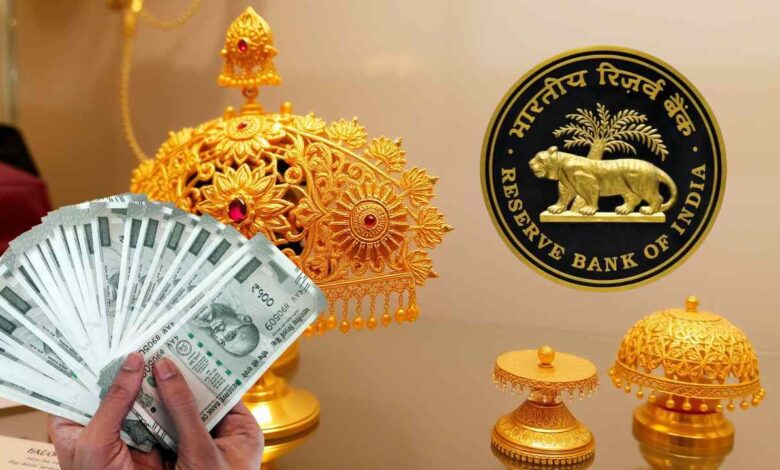Changing Gold Loan Rules: Will Small Borrowers Get Relief?

Gold Loan: The Reserve Bank of India (RBI) recently released new draft guidelines concerning gold loans. The aim of these guidelines is to enhance transparency, protect borrowers, and improve risk management. However, the Finance Ministry has recommended that these rules be relaxed for small borrowers. Let’s delve into the key aspects of these draft guidelines and their potential impact.
Key Aspects of the Draft Guidelines:
Gold loans are a popular financial service in India, allowing individuals to borrow money by pledging their gold. Compared to personal loans, they offer lower interest rates and involve less paperwork. The RBI has proposed several changes to gold loan regulations to address issues such as lack of transparency, varied default procedures, and inadequate customer protection. Notable among these are:
- Loan-to-Value (LTV) Ratio: The LTV ratio has been capped at 75%. This means borrowers can receive a loan of up to 75% of their gold’s value.
- Restrictions on Pledged Gold: A limit of a maximum of 50 grams for gold coins and a total of 1 kg for gold and silver ornaments has been set for pledging. Fresh loans against already pledged gold will not be permitted.
- Proof of Ownership: To prevent money laundering and fraud, borrowers will be required to submit original invoices or self-declarations for the pledged gold.
- Gold Valuation Standards: Gold valuation across the country will be standardized based on the 22-karat gold rate.
- Loan Agreement Disclosures: Full disclosure in loan agreements has been mandated, including gold weight, valuation details, loan terms, auction rules, and timelines for gold release.
- Monitoring of End-Use of Loan Amount: Borrowers will be required to specify the end-use of the loan amount and provide supporting documents.
- Auctioning Procedures: It must be ensured that if gold is auctioned, it is not sold below 90% of its value, and any surplus amount is refunded to the borrower.
Finance Ministry’s Intervention:
The Finance Ministry has requested the RBI to exempt small borrowers (those taking loans up to ₹2 lakh) from these new rules and to defer the implementation of the rules until 2026. The objective is to protect the interests of low-income families and small borrowers who rely heavily on gold loans.
Potential Impact of New Rules:
These proposed rules are expected to impact farmers, daily wage earners, and small business owners the most, potentially making it harder for them to access gold loans.
Get Instant News Updates!
Join on TelegramCurrent Status:
The RBI is currently gathering feedback from stakeholders, and it is likely that the Finance Ministry’s suggestions will be incorporated into the final guidelines.
Practical Takeaways for Borrowers:
- Borrowers should be aware that the amount they can borrow against their gold might be reduced due to the 75% LTV cap.
- It will be important to have proof of ownership (like original bills) or be prepared to provide a self-declaration for the gold being pledged.
- The standardization of gold valuation to 22-karat rates aims to bring more fairness and consistency in how gold is valued by lenders.
- Borrowers should carefully review loan agreements for all terms and conditions, especially regarding auction procedures and timelines.
- Lenders will likely ask for the purpose of the loan, so borrowers should be prepared to provide this information and potentially some documentation.
- If a default occurs and gold is auctioned, borrowers have a right to any surplus amount recovered by the lender above the outstanding loan and associated costs.
- The potential exemption for small loans (up to ₹2 lakh) could mean that these stricter rules might not apply to a significant portion of gold loan borrowers if the Finance Ministry’s suggestions are accepted.
These new guidelines are an effort to make the gold loan market more regulated and customer-friendly. The full impact will be understood once the final regulations are published.

